- 本月热门
-
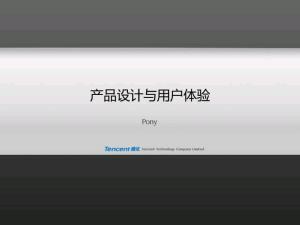 产品设计与用户体验 by 马化腾@腾讯
产品设计与用户体验 by 马化腾@腾讯 -
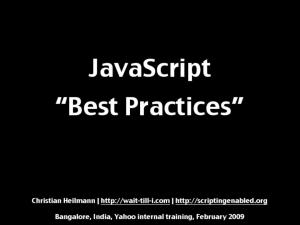 JavaScript Best Practices(JS最佳实践) by Christian Heilmann@Yahoo(2009)
JavaScript Best Practices(JS最佳实践) by Christian Heilmann@Yahoo(2009) -
 JavaScript與AngularJS技術研討(台版基础入门教程) by 李柏鋐
JavaScript與AngularJS技術研討(台版基础入门教程) by 李柏鋐 -
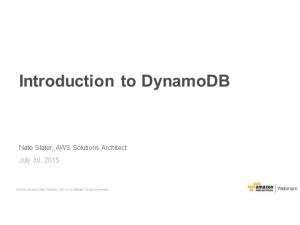 Introduction to DynamoDB(AWS的DynamoDB数据库简介) by Nate Slater@Amazon
Introduction to DynamoDB(AWS的DynamoDB数据库简介) by Nate Slater@Amazon -
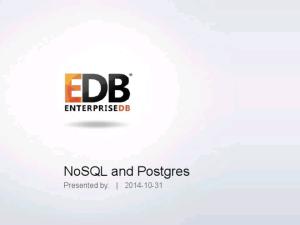 NoSQL and Postgres简介 by 萧少聪@EDB
NoSQL and Postgres简介 by 萧少聪@EDB -
 AngularJS the performance parts(AngularJS性能:过去现在和未来) by toddmotto
AngularJS the performance parts(AngularJS性能:过去现在和未来) by toddmotto -
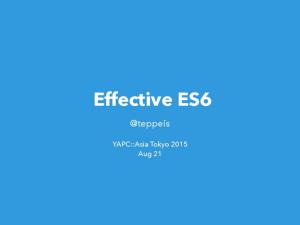 高效的ES6 (ECMAScript 6入门教程) by teppeis(日)
高效的ES6 (ECMAScript 6入门教程) by teppeis(日) -
 教你如何设计精美的产品页面 by 弥难@淘宝
教你如何设计精美的产品页面 by 弥难@淘宝 -
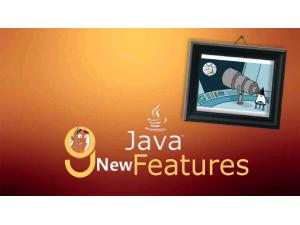 Java9 New Features新特性一览 by takipi
Java9 New Features新特性一览 by takipi -
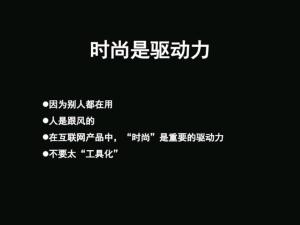 微信背后的产品观-不要听从“产品经理”的需求 by 张小龙@腾讯
微信背后的产品观-不要听从“产品经理”的需求 by 张小龙@腾讯
加收藏
How to build a content and social media engine[如何构建内容和社交媒体营销引擎] by by Marcel Santilli
第1页
How to build a content and social media engineIt takes a kickass team!
by Marcel Santilli
@santilli
@santilli
第2页
“Coming together is a beginning. Keeping together is progress. Working together is success.”
-Henry Ford
-Henry Ford
第3页
What do you want to get out of this workshop today?
第4页
What is your biggest challenge today?
第5页
Some background on me.
第6页
第7页
Launched July 2013
第8页
第9页
第10页
300+ articles published after 1.5 years
第11页
150+ contributors recruited to create content
第12页
15,000 marketing responses with average cost of $25
第13页
$19M in opportunities for the business
第14页
50K+ visits, 6K+ shares and 500+ inbound links
第15页
第16页
第17页
第18页
Build and launched site in just 3 months
第19页
Launched June 2015
第20页
230 articles published in 4 months
第21页
On track to reach 120K pageviews/month organically
第22页
134 contributors
第23页
Managing team of 13 people including internal, freelancer and vendors.
第24页
Agenda:
Why content matters
Building a content strategy that is tailored to your resources
Define roles and responsibilities
Structuringyourcross-functionalteam
Processes and tools to get work done and scale
Set metrics and KPIs to measure your team's success
Ask me anything
Why content matters
Building a content strategy that is tailored to your resources
Define roles and responsibilities
Structuringyourcross-functionalteam
Processes and tools to get work done and scale
Set metrics and KPIs to measure your team's success
Ask me anything
第25页
Focus on content vs. social media. Why?
Content is essential to a social media strategy. You can’t have engagement without content. Content sparks growth in social.
第26页
Why content matters
第27页
If your content today was a product in itself, would your customers buy it?
Or yet another way to think about it is if your content was actually a product in itself, would people pay for it?
Is your content so valuable to your customers that they would pay for it if they had to?
This is a fundamental shift in how to think about content. It’s a challenge but it’s also very exciting. We get to be part of changing how marketing gets done.
第28页
What is the reality today?
Let’s take a quick look at what is the reality today for your business.
第29页
Only half of decision makers worldwide would first turn to an existing supplier when faced with a business challenge.
Remember the example I used of the last time you needed something, which friend did you turn to?
Well for decision makers, only about half would turn to an existing supplier they are working with when faced with a business challenge.
Only half (53%) of decision makers worldwide would first turn to an existing supplier when faced with a business challenge. (Text100)
第30页
Customers are cutting brands out of their learning.
This is a well-known trend, that customers are cutting brands out of their learning. Decision-makers feel empower.
第31页
That translates to you and your company getting involved too late in the process.
On average, customers are57% of the way through theirpurchase decision makingprocess before engagingwith your company.
The challenge for us is, how to teach where our customers learn and become part of the journey before they even start due diligence.
第32页
They’re getting more and more of their information from outside sources.
Customers are also getting more and more information from outside sources.
Interruptionmarketingandadvertisingisbecominglesseffectiveandmorecostly(toomuchnoise)
第33页
Suppliers today account for less than one-half of all information that buyers use to aid in their purchase decisions.
Information you supply as a business now accounts less than half of all the information that buyers use to aid in their purchase decisions.
This means that depending on how many suppliers a customer is considering, you’re likely to receive no more than 10%–15% “share of mind.”
第34页
Complex environment with increasingly more players and more noise.
To make matters even more challenging, for most of us here today we are playing in an increasingly more complex environment.
That is more players that are trying to differentiate themselves in different ways. There’s also a lot more content out there and more noise.
第35页
What does that mean to your business?
What does this mean to your business?
第36页
Critical need for businesses to deliver the right mix of (valuable) content to the right audience.
If you’re here you already realize this.
There’s a critical need for businesses to present a balance of relevant technical and business content when engaging with multiple decision-makers throughout the buyer’s journey.
第37页
It all boils down to one word…
At the end of the day, this all boils down to a single word…
第38页
TRUST
Trust. The right content creates trust.
第39页
To become the trusted advisor to prospective customers in your space.
You are here to develop a content strategy that will help position you as a trusted advisor to key decision-makers and influencers in your space.
第40页
Have a personal trainer mentality
You have to have a personal trainer mentality to be successful when it comes to content.
You’re here to make your prospective customers better. Challenge the way they even approach their business. Re-educating and demonstrating the cost of not changing course.
第41页
Teach where customers learn.
There’s a need to teach where customers learn. You are teaching through content in a way that leads TO your products and solutions but not WITH them.
Don’t make things about yourself.
第42页
The problem is that content is too often just an afterthought
But perhaps one of the biggest problems I see is that for many organizations content is just an afterthought.
It is our job to be intrapreneurs and change that mentality in our organizations.
第43页
But if done right content can spark growth and be essential to your business.
If done right content can truly spark growth for your business and make a difference, going from nice to have to need to have.
第44页
Building a strategy that is tailored to your resources
第45页
So what does it take to create a content and social media engine?
第46页
Don’t underestimate the discovery phase.
第47页
Formalize your content strategy. Keep it simple but actually write it down.
第48页
What are your business objectives?
第49页
Examples of business objectives
Capture mindshare with key business decision makers and influencers
Establish trust with relevant personas.
Strengthen perception of HP Enterprise as a leading voice in the enterprise software space.
Generate marketing qualified leads, drive traffic and conversions.
Validate the efficacy of thought-leadership content to internal stakeholders.
Develop and incentivize an expert network of internal and external influencer-contributors.
Track user behavior, engage with and improve audience intelligence.
Establish trust with relevant personas.
Strengthen perception of HP Enterprise as a leading voice in the enterprise software space.
Generate marketing qualified leads, drive traffic and conversions.
Validate the efficacy of thought-leadership content to internal stakeholders.
Develop and incentivize an expert network of internal and external influencer-contributors.
Track user behavior, engage with and improve audience intelligence.
第50页
Start with your audience in mind.
Who are you trying to impact?
第51页
You need to know more about your prospective customers than they do.
You need to develop a deep understanding of your customer’s business. Use that understanding to push the customer’s thinking and teach them something new about how their company can compete more effectively.
第52页
Who are you trying to impact (be specific)?
第53页
Find a purpose.
第54页
How do you want your audience to perceive you?
第55页
What are you audience’s top needs that your content can help solve?
第56页
Help position people to succeed. They will then trust themselves first, opening them to trust you as an advisor in their journey.
第57页
Discover what content will challenge and disrupt customer priorities.
Content that unteaches customers something they are currently doing in their business. Focusing on the cost of current behavior.
第58页
How will your content create value for your audience?
第59页
Write down your vision.
第60页
To be the [how you want your audience to perceive you] for [your audience] that want to [audience’s need]. Provide [how you’ll create value for your audience].
To be the leading online destination for forward-thinking dev and tech professionals that want to solve today’s most challenging business problems and help shape the future of IT.
Provide unique insight into what’s next while equipping our readers with the practical knowledge that can be applied to real-world challenges, now.
To be the leading online destination for forward-thinking dev and tech professionals that want to solve today’s most challenging business problems and help shape the future of IT.
Provide unique insight into what’s next while equipping our readers with the practical knowledge that can be applied to real-world challenges, now.
第61页
What are your top resource constraints?
第62页
Other aspects of your content strategy
Content objectives
Content types (articles, videos, etc.)
Amplification channels
Thought leadership vs. technical
Evergreen vs. news vs. research
Topics to cover
Contributor strategy
Content types (articles, videos, etc.)
Amplification channels
Thought leadership vs. technical
Evergreen vs. news vs. research
Topics to cover
Contributor strategy
Basically, what we are trying to accomplish is the art of communicating with our customersand prospects without selling.It is non-interruption marketing.Instead of pitchingour products or services, we are delivering information that makes our buyer and/of influencermore intelligent. The essence of this content strategyis the belief that if we, asbusinesses, deliver consistent, ongoing valuable information to buyers, theyultimately reward us withtheirbusiness and loyalty.
Approach
Product-neutral thought leadership and technical security content.
Content objectives
Challenge their thinking
Get them to think about the right issues
Help them do their jobs better
Inform them of the latest threats and risk to their business
Help them avoid costly and damaging security mistakes
Content type
Evergreen articles, news articles, webinars, white papers, analyst reports, videos, infographics, and ebooks
Topics
第63页
Approach to content
Valuable
Useful / practical
Contextual and relevant
Timely
Easy to consume
Device agnostic
Findable
Non-intrusive
Engaging
Unique
Builds trust and authority
Useful / practical
Contextual and relevant
Timely
Easy to consume
Device agnostic
Findable
Non-intrusive
Engaging
Unique
Builds trust and authority
第64页
Balanced contributor strategy
Internal experts
Business partners
Customers (experts and executives)
Industry influencers
Educators / external researchers
Paid writers / journalists
Paid influencers
Business partners
Customers (experts and executives)
Industry influencers
Educators / external researchers
Paid writers / journalists
Paid influencers
Your contributor strategy can make or brake your program. The quality and consistency of content will largely depend on this.
第65页
Think big but start super narrow and focused.
MVP approach.
第66页
Define roles and responsibilities
Define roles right from the beginning. Find the right balance between in-house and agencies. Get buy-in from different parts of your organization and involve the right people.
Many roles and responsibilities can be done by the same person depending on the scale of the program. But some of these roles are certainly required for a successful program.
I would not recommend completely outsourcing all of these roles and your entire content program either. You need someone that is driving this internally, that knows your audience, your industry/space and is passionate.
第67页
Program director / Chief editor
Managing editor / content strategist
Program manager
Technical expert
Copy editor and proofing
SEO / SEM
Digital strategist
Social listening and ideation
Metrics and analytics
Social media and amplification
Paid media
Community management
Influencer management
Creative / graphic design
Web dev
PR & AR
Demand generation
Managing editor / content strategist
Program manager
Technical expert
Copy editor and proofing
SEO / SEM
Digital strategist
Social listening and ideation
Metrics and analytics
Social media and amplification
Paid media
Community management
Influencer management
Creative / graphic design
Web dev
PR & AR
Demand generation
Roles and responsibilities
第68页
Establish guidelines and hold regular training and enablement.
第69页
Have a place for everyone to easily find information.
第70页
Structuring your cross-functional team
第71页
Think broader than just your immediate, internal team.
第72页
Internal team
Across your organization
Customers
Business partners
Agencies / vendors
Freelancers / contractors
Crowdsourcing
Across your organization
Customers
Business partners
Agencies / vendors
Freelancers / contractors
Crowdsourcing
Where to look
第73页
Time to market
Scalability
Internal resources available
Budget
Quality
Time investment
Coordination
Scalability
Internal resources available
Budget
Quality
Time investment
Coordination
What to consider?
第74页
Managing editors
Digital strategist
Social media and community manager
Visual designers
Web dev team
Copy editors (contractor)
Internal subject matter expert per business group
Contributors
Digital strategist
Social media and community manager
Visual designers
Web dev team
Copy editors (contractor)
Internal subject matter expert per business group
Contributors
Sample team structure
第75页
Different team members can be leads for certain functions.
第76页
Set core values for your team.
Help shape desired behaviors on a daily basis and shape the broader culture.
第77页
It’s all about people – Always is and always will be. People matter more than anything. We care about those we work with and those we serve. We are all about building trust-based relationships and establishing win-win partnerships. We care about the results but not at the expense of people. Everything we do should build trust.
We are challengers – Change is the only constant. We don’t just realize that, we enthusiastically embrace and drive ongoing change. We challenge the norms and push boundaries. We don’t maintain, we multiply. We are bold in what we do.
Growth and learning is in our DNA – Our curiosity sparks an endless appetite for learning. We can always be better. We are always pursing growth on all levels and fronts.
We are passionate for our work – We are here to create remarkable experiences. We get things done. Above all, we have passion for what we do. We are proud of what we do. We are relentless and driven.
We envision BIG and start small – We don’t welcome small thinking but we’re all about small starts. We are responsible risk-takers. We try new things without losing focus on what really matters. We know that greatness comes from caring about the little day-to-day things. We move fast.
We are generous givers, not self-serving takers – We give more than we take. We are always helping. We teach and educate. We are always setting people up for success.
We can do a lot more by doing less better and faster – We always bring our best. It’s focused excellence. We are obsessed about quality but with a iterative, fast-paced approach.
We will laugh hard, loud, and often – We enjoy our work and we have fun while at it. We don’t take ourselves too seriously.
We are challengers – Change is the only constant. We don’t just realize that, we enthusiastically embrace and drive ongoing change. We challenge the norms and push boundaries. We don’t maintain, we multiply. We are bold in what we do.
Growth and learning is in our DNA – Our curiosity sparks an endless appetite for learning. We can always be better. We are always pursing growth on all levels and fronts.
We are passionate for our work – We are here to create remarkable experiences. We get things done. Above all, we have passion for what we do. We are proud of what we do. We are relentless and driven.
We envision BIG and start small – We don’t welcome small thinking but we’re all about small starts. We are responsible risk-takers. We try new things without losing focus on what really matters. We know that greatness comes from caring about the little day-to-day things. We move fast.
We are generous givers, not self-serving takers – We give more than we take. We are always helping. We teach and educate. We are always setting people up for success.
We can do a lot more by doing less better and faster – We always bring our best. It’s focused excellence. We are obsessed about quality but with a iterative, fast-paced approach.
We will laugh hard, loud, and often – We enjoy our work and we have fun while at it. We don’t take ourselves too seriously.
第78页
Editorial guidelines
第79页
第80页
Social media guidelines
第81页
Processes and tools to get work done and scale
第82页
Think about growth and scalability as you define processes and technology.
Think about growth and scalability as you define process and technology.
If you want to scale and be efficient, you need a process and technology framework to ensure a steady stream of relevant content.
第83页
Clearly define your processes and workflow. Develop it with your team.
Clearly define workflows based on the different types of content. This is something we are constantly shaping and improving, but Skyword has certainly helped us on this front.
To give you an example, of the research on vulnerabilities that we disclosed that to go through significant internal review, with PR and legal being heavily involved. Other evergreen thought leadership articles, just goes through our regular workflow.
第84页
第85页
第86页
Make the world a better place. Please, stop using email.
第87页
Content management systems (CMS)
Drupal
Wordpress
Squarespace
第88页
MARCEL SANTILLI
第89页
Content marketing platforms
第90页
第91页
Communication tools
Slack
Join.me
Google Hangout
SMS
第92页
MARCEL SANTILLI
第93页
File sharing and hosting
第94页
MARCEL SANTILLI
第95页
Social media management and monitoring tools
Sysomos
Radian6
Hootsuite
BufferApp
第96页
MARCEL SANTILLI
第97页
Influencer management
第98页
MARCEL SANTILLI
第99页
Team collaboration software
第100页
MARCEL SANTILLI
第101页
CRM or contact management tools
第102页
MARCEL SANTILLI
第103页
Analytics and marketing automation
Pardot
Optimizely
第104页
MARCEL SANTILLI
第105页
Other tools
Zapier
Evernote
Feedly
iStockPhoto
第106页
MARCEL SANTILLI
第107页
Set goals, metrics and KPIs to measure your team's success
第108页
Define your KPIs and what you will need to measure.
第109页
Some KPIs we are measuring
Cost per visit/view
Engagement per visit
Visit to response rate
Average cost per response
Response to validated lead (VL)
Average opportunity per visit
Average opportunity size
Cost per opportunity
Engagement per visit
Visit to response rate
Average cost per response
Response to validated lead (VL)
Average opportunity per visit
Average opportunity size
Cost per opportunity
第110页
Track ROI from the beginning to give your content program more respect.
第111页
Ask me anything!
第112页
MARCEL SANTILLI
112
Connect with me
Twitter.com/santilli
Linkedin.com/in/marcelsantilli
Twitter.com/santilli
Linkedin.com/in/marcelsantilli
